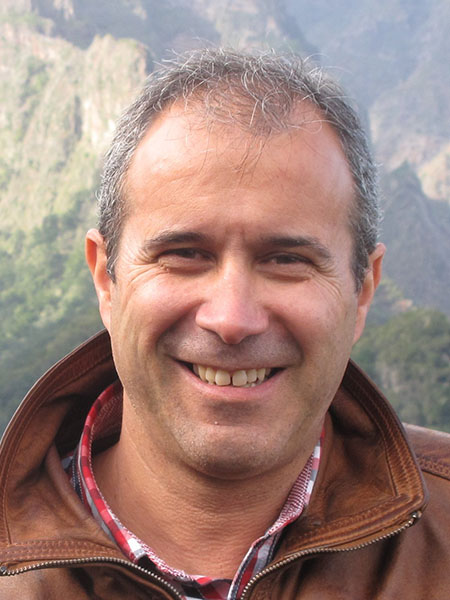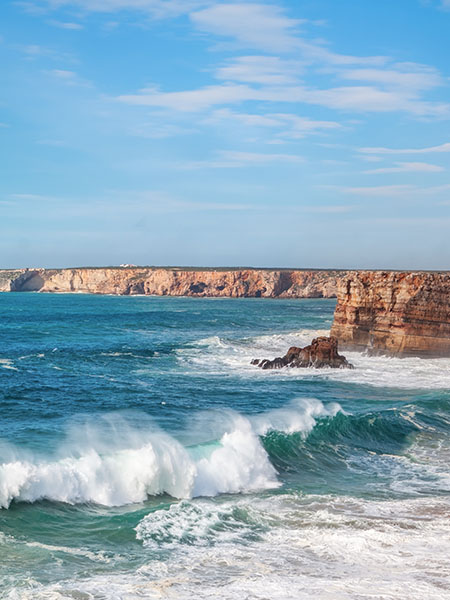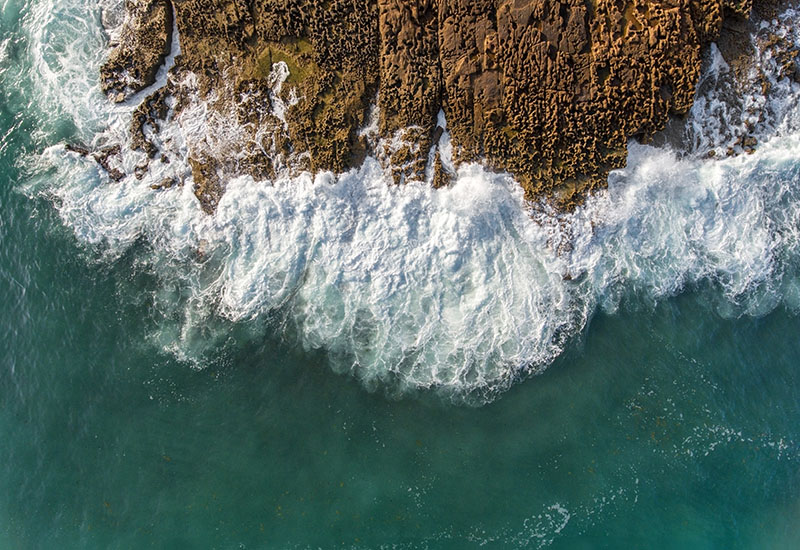“Rising sea levels all along Portugal’s coast due to global warming will cause much destruction, certainly in the second half of this century, if not in the next few decades.”
WORDS Len Port
This is the view of Professor Carlos Antunes, a specialist researcher at the University of Lisbon. “Since rising sea level rates are still low, in the order of three to six millimetres per year, a rise of no more than 10 to 20 centimetres is expected by 2050. The rise of a few tens of centimetres will affect only inland waters, estuaries and lagoon environments such as the Ria Formosa. But since levels are accelerating, the reality in the second half of the century will be quite different.”
Global warming is causing seas to rise at different rates in different parts of the world. Melting polar ice caps and glaciers are adding large quantities of water. At the same time, surface water temperatures are warming and thus expanding the seas.
Portuguese politicians have expressed some of the same concerns as scientists. The Environment Minister Duarte Cordeiro said that reaching zero greenhouse gas emissions by 2050 was essential – “more than to save our planet, but ourselves as a species.”


President Marcelo Rebelo de Sousa has said that the COVID pandemic and Ukraine war must not be used as an excuse for inaction. “We must recover the time we have lost and give hope a chance once again before it is too late.”
Scientists have criticised major world leaders for failing to agree on sufficient action to minimise ocean heating and radically cut greenhouse gas emissions. Speaking at the United Nations Ocean Conference in Lisbon last year, UN Secretary-General António Guterres said, “Sadly, we have taken the ocean for granted,” adding that the world “is now in the middle of an ocean emergency”.
On the opening day of the UN World Climate Action Summit (COP28) in Dubai last month, Guterres, a Portuguese politician and diplomat, delivered a passionate appeal to delegates from more than 160 countries: “Humanity’s fate is hanging in the balance. This is a sickness only you, global leaders, can cure.” He pleaded for an end to dependence on fossil fuels and the fulfilment of a long overdue promise of justice in the shape of funds to pay for the most devastating impacts of climate change in the world’s less developed but most vulnerable communities and countries.
The then Portuguese Prime Minister António Costa attended the summit in Dubai, ironically one of the world’s biggest producers of fossil fuels. Portugal had its own pavilion to hold side events for the first time, having shared the European Union’s pavilion space at previous COP meetings.
Portugal has an excellent record of dealing internally with climate change, particularly in phasing out fossil fuels and relying on renewables. However, the main greenhouse gas-polluting countries – the United States, China, India and Russia – have long indulged in rhetoric about global warming but hopelessly failed to deliver on promises of proper action to adequately curtail the dire situation.
Leaders at the COP28 summit made a number of important pledges. It remains to be seen if and when they keep them to stop the current existential crisis.
Rising sea levels in the Algarve
Professor Antunes expects that, over the next few decades, the region between Lagos and Portimão is likely to suffer an increase in the frequency and amplitude of extreme floods. Flooding is already happening in estuaries and salt marshes where the high water levels during the maximum spring tides enter the marginal roads. These occurrences have been witnessed in Ferragudo, Olhão and Tavira and through the Lagos sanitation network.
Some embedded beaches along the coast will be more affected by higher tides, causing higher erosion rates. “The erosion rates at some hotspots along the Portuguese coast are expected to rise and intensify, and there will be a reduction of the bathing areas,” says Professor Antunes. The monitoring the professor carries out every day at Cascais Tide Gauge, shows a response to the positive anomaly of the North Atlantic Sea Surface Temperature (SST). Record sea temperatures in June 2023 resulted in a 3 cm rise. “It was something we were expecting due to the well known thermal expansion of the ocean,” he observes.
Could this negatively affect the Algarve’s vital tourist sector? “Although not yet quantified, some impact on tourism is expected to happen due to increasing erosion and shrinking bathing areas.”
Asked about the likely overall impact on the town of Lagos, Professor Antunes replied: “Supported in our models (see footnote), some of the adjacent areas of the Ribeira de Bensafrim may be flooded during extreme meteorological events associated with southwest sub-tropical storms. It is also likely that the flooding occurring in Ferragudo every four to five years will start to happen in the marginal areas of Lagos town with more frequency and magnitude.
“The estuary upstream of the Ribeira will also see increased flooding, affecting some agricultural lands with the salt intrusion impact as expected with sea level rises.”
Professor Antunes and his university team have only worked closely in the Algarve with the Loulé municipality. They have made a flood cartography of future scenarios of sea level rises and a coastal vulnerability and risk assessment cartography with high spatial resolution. As far as they know, no other Algarve municipality has carried out detailed studies, only the collective work of the regional nature organisation AMAL (CIM Algarve-Comunidade Intermunicipal do Algarve).
“There is no doubt that coastal municipalities must work first on the risk assessment due to sea level rise and then an impact mitigation plan based on this assessment. There is time to prepare ourselves, but due to the high levels of complexity in the adaptation measures such as protection and relocation, we must start to plan now. Otherwise, the costs will rise above sustainable heights.
“My team have already done such studies for Lisbon, Loulé and Almada municipalities. And we are also participating with the National Roadmap for Adaptation 2100 of APA, the Portuguese Environment Agency, which in part will contribute to such assessments, but at the national rather than municipal scale.”
However, the future projections are scenario-based and created with physical-mathematical models with their own errors and uncertainties. “They are reality approximations,” says Professor Antunes. “What we know for sure is that sea levels will not stop rising in 2100. They will keep rising beyond the next several centuries as they did in the geological past in which climate conditions were similar. Sea level rise is not a matter of ‘if’ it will happen, but ‘when’ it will happen.”
While all this may somewhat console people who fear devastation by 2050, Professor Antunes points out that “We must prepare our coastal territories and minimise valuable exposed elements to minimise the damage, the costs and the risks.”
The world is heating up at an unprecedented pace, according to the World Meteorological Organisation (WMO). It has been confirmed that 2023 was the warmest year on record, with temperatures rising 1.4 ºC above pre-industrial levels, just short of the critical 1.5 ºC.













